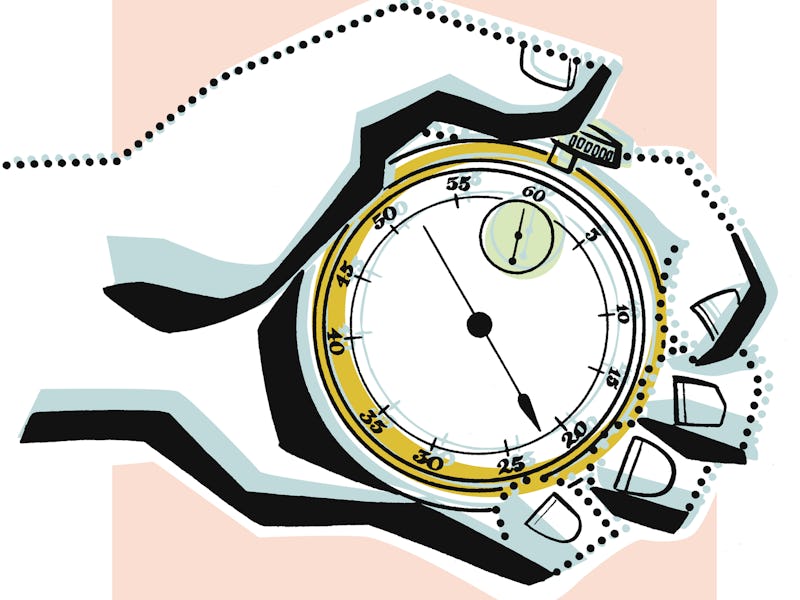Study: Genetic ‘clock’ predicts lifespan in vertebrates
Protecting endangered species could depend on this predictive tool.

From genetics alone, scientists can now predict how long any of myriad different creatures can live. The “lifespan clock” estimates vertebrate animals’ (those with a backbone) longevity — including species that are already long-gone, including wooly mammoths, T.Rex, and even ancient humans.
The clock provides a novel and relatively quick way to estimate a variety of organisms’ lifespans. It could be a helpful tool for conservationists managing species on the brink of extinction, enabling them to keep dwindling populations robust.
The team used the clock to accurately predict the lifespan of extinct species like the straight-tusked elephant, close relatives to humans like chimpanzees, and long-lived species like the Pinta Island tortoise.
The new model is described in the journal Scientific Reports this week.
Genes and longevity
The researchers analyzed the genomes of 252 vertebrate species with known lifespans to identify the 42 genes. By looking at these genes’ expression, it may be possible to predict the lifespan of any animal with a spinal column — living or extinct.
The method screens 42 specific genes for CpG sites, short regions of DNA the density of which is correlated with longevity, to predict how long certain animals may live.
They found that one factor across these 42 genes, CpG density, is highly predictive of lifespan in vertebrates, including extinct species. These CpG dense sites or “CpG islands” regulate gene expression and shape aging, and were the most powerful predictor across the different genetic factors.
A multitude of factors speed or slow aging, including exercise, diet, and genetics. DNA methylation is one genetic process that drives aging — in DNA methylation, methyl groups are added to the DNA molecule, modifying gene expression. These methyl groups accumulate and decline predictably around certain CpG-dense DNA sites over an animal’s lifetime. This predictable pattern enables researchers to estimate how long humans and animals will live — barring accidents or other environmental factors that can extend or shorten life, of course
To create the model, the research team looked at these patterns of methylation in vertebrates, like lions, lizards, and sharks.
Limits to the model
The clock does have some drawbacks: the model likely overestimates the lifespan for species living in the wild. Environmental factors — getting eaten or hunting by humans — can mean animals tend to die much sooner than their genetics might predict. Rather, it provides a maximum lifespan prediction, which could be more useful for animals living in captivity.
Lonesome George, a Pinta Island tortoise, at 100-years-young. He died in 2012. The subspecies is now extinct.
It’s unclear if the tool can be used to predict human longevity. Humans were excluded from the analysis’ final results — the data put their predicted lifespan at 120 years. That is much higher than the current global average lifespan of 86 years old.
The clock does have practical applications: the model can be useful in determining conservation policy like fish-catch limits and modeling the fate of endangered species. It can also be used to estimate the lifespan of long-lived species like the bowhead whale, who often outlive their observers.
Lifespan varies widely, even among similar species. The pygmy voby, a kind of small shark, lives for only eight weeks, while the Greenland shark may live over 400 years of age. Estimating the lifespan of these animals in the wild or captivity is challenging. Predicting the lifespan of extinct species is far more difficult.
This new model offers a new, fast approach to quantifying these hard-to-observe animals.
How long animals live is a critical measure informing the management of endangered wild species and harvest of wild animals like fish and sharks. The metric is a valuable part of maintaining sustainable harvests and keeping populations healthy — and eventually, it could help humans understand why we live as lhow long we live.
Abstract:
Biological ageing and its mechanistic underpinnings are of immense biomedical and ecological significance. Ageing involves the decline of diverse biological functions and places a limit on a species’ maximum lifespan. Ageing is associated with epigenetic changes involving DNA methylation. Furthermore, an analysis of mammals showed that the density of CpG sites in gene promoters, which are targets for DNA methylation, is correlated with lifespan. Using 252 whole genomes and databases of animal age and promotor sequences, we show a pattern across vertebrates. We also derive a predictive lifespan clock based on CpG density in a selected set of promoters. The lifespan clock accurately predicts maximum lifespan in vertebrates (R2 = 0.76) from the density of CpG sites within only 42 selected promoters. Our lifespan clock provides a wholly new method for accurately estimating lifespan using genome sequences alone and enables estimation of this challenging parameter for both poorly understood and extinct species.